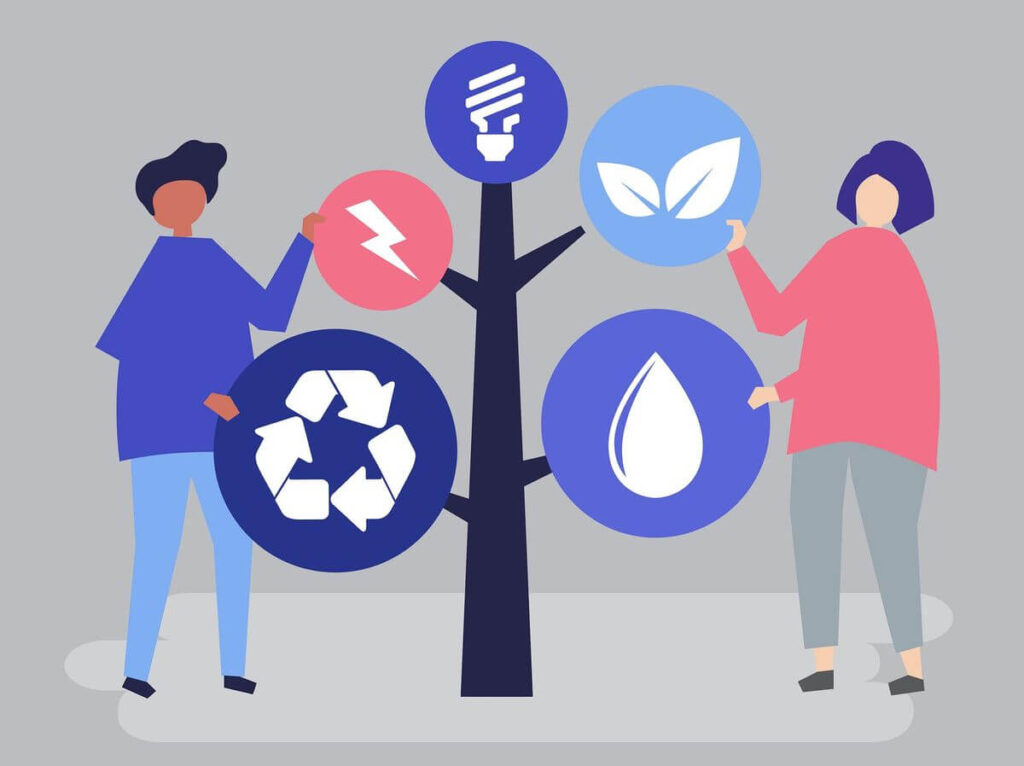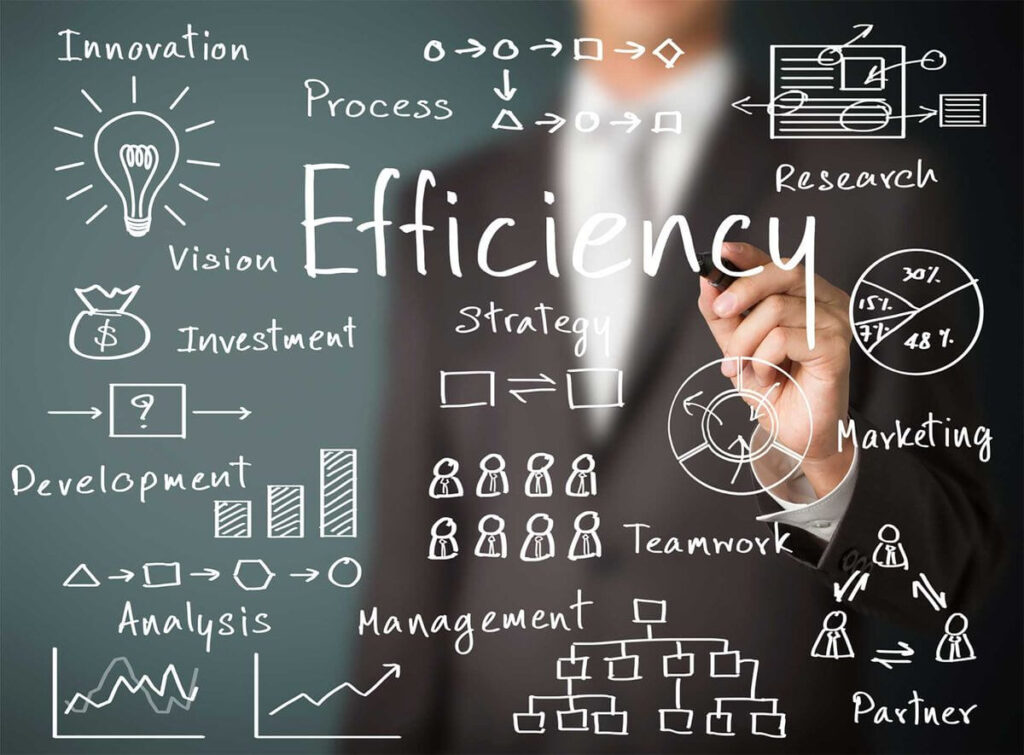As a sales manager, your role is pivotal in steering the sales team towards peak performance and efficiency. By focusing on strategic training, leveraging technology, aligning processes, and fostering a culture of success, you can significantly enhance your team’s productivity. This article will guide you through practical steps to make your sales team more efficient, from onboarding to tracking sales efficiency ratios.
Key Takeaways for Sales Efficiency
Invest in comprehensive onboarding and ongoing sales training to empower your team for peak performance.
Utilize sales productivity tools and centralize sales content to streamline the sales process and reduce time spent on administrative tasks.
Foster strategic alignment between sales and marketing to improve lead scoring and process efficiency.
Cultivate a results-driven culture by setting SMART goals, celebrating achievements, and minimizing unproductive meeting times.
Regularly assess sales efficiency ratios to identify areas of improvement and prioritize both efficiency and effectiveness in sales strategies.
Optimizing Onboarding and Training for Peak Performance

Invest in Comprehensive Sales Training Programs
To ensure your sales team hits the ground running, investing in a robust onboarding and sales training program is essential. A well-structured training program not only equips new hires with the necessary skills but also significantly reduces ramp-up time, leading to a more productive sales force.
Effective sales training should be an ongoing process, not just a one-time event. Continuous learning opportunities can result in a substantial increase in net sales per representative. Consider the following steps to enhance your sales training:
Develop a clear set of objectives and sales activities for reps to focus on.
Choose the right training format, whether it be in-person sessions, webinars, or mobile courses.
Ensure consistency across all teams to maintain a uniform standard of excellence.
By focusing on both initial onboarding and ongoing development, you create a foundation for sustained sales success and a team that is always at the forefront of sales techniques.
Implement a Sales Managers' Shadowing Initiative
The Sales Managers’ Shadowing Initiative is a strategic move to bridge the gap between new and experienced sales representatives. By pairing junior reps with seasoned professionals, the transfer of knowledge and skills is accelerated, fostering a collaborative learning environment. This initiative not only benefits the mentees but also provides leadership development opportunities for the mentors.
The process of shadowing involves a discussion between the manager and the employee, focusing on the possibilities and reasons for job shadowing. It’s crucial to establish clear objectives and expectations for both parties involved.
To ensure the success of the shadowing program, consider the following steps:
Define the goals and outcomes of the shadowing experience.
Select the right pairings based on skills, experience, and personality.
Schedule regular check-ins to monitor progress and provide feedback.
Encourage open communication to address any concerns or questions.
Remember, the ultimate aim is to create a new generation of sales leaders who are well-equipped to handle the evolving challenges of the sales landscape.
Establish Clear Communication Channels
Clear communication channels are the backbone of any successful sales team. Establishing regular check-ins and ensuring that all team members are on the same page can significantly enhance efficiency. Sales managers should prioritize creating an environment where information flows freely and effectively between all stakeholders.
Make time for team meetings to put faces to names and build rapport.
Schedule one-on-one sessions to address individual concerns and foster open dialogue.
Utilize dedicated messaging apps like Slack for centralized conversation tracking.
By maintaining regular communication, sales managers can ensure knowledge sharing, alignment, and the development of trust within the team. This approach not only helps in managing multiple sales teams but also in building strong relationships that are crucial for a cohesive sales effort.
It’s essential to gather comments from sales reps and other internal stakeholders regularly. This feedback loop allows sales managers to keep a pulse on the sales process and swiftly address any issues that arise, ensuring that the sales team’s needs are met effectively.
Leveraging Technology for Sales Productivity

Selecting the Right Sales Productivity Tools
In the quest to enhance sales team efficiency, selecting the right sales productivity tools is a pivotal step. These tools are designed to streamline the sales process, allowing your team to focus on what they do best—selling. A 2017 report by CITE Research highlighted the reliance on an average of 11 sales tools by sales executives, underscoring the importance of these resources.
The key is not to accumulate a multitude of tools, but to choose ones that integrate seamlessly with your team’s workflow and enhance their productivity.
Consider the following categories of tools that can significantly impact sales productivity:
CRM Software: Centralizes customer information and interactions, facilitating better customer relationships.
Sales Intelligence Software: Provides data-driven insights to identify and prioritize valuable leads.
Sales Automation Software: Reduces time spent on repetitive tasks, allowing sales reps to concentrate on closing deals.
It is essential to resist the temptation to stick with the status quo if it means ignoring ongoing issues that hinder productivity. Regularly soliciting feedback from your team can help identify which tools are genuinely empowering them to be more efficient and where improvements can be made.
Centralizing Sales Content for Easy Access
Centralizing sales content is a pivotal strategy for enhancing sales team efficiency. By consolidating all sales-related materials into a single, accessible repository, sales representatives can swiftly locate and utilize the resources they need. This approach not only streamlines the search process but also ensures consistency in the information being disseminated to potential clients.
A centralized content system allows for the uniformity and accuracy of sales materials, which is essential for maintaining a professional image and fostering trust with clients.
To effectively centralize sales content, consider the following steps:
Create a comprehensive inventory of all sales materials, including blog posts, templates, videos, and checklists.
Utilize a platform that integrates with your sales workflow, such as a sales enablement platform or a company-wide spreadsheet.
Regularly update and curate the content to keep it relevant and effective.
By adopting these practices, your sales team can minimize errors, improve productivity, and grow. Remember, the goal is to make it as easy as possible for your team to find and use the content that drives deals forward.
Automating Routine Administrative Tasks
In the pursuit of sales efficiency, automating routine administrative tasks is a game-changer. By identifying activities that are repetitive and time-consuming, sales managers can implement automation to free up their team’s time for more high-value work. Common tasks ripe for automation include data entry, scheduling, and email follow-ups.
Automation not only streamlines processes but also minimizes the risk of human error, ensuring a more consistent and reliable workflow.
Here are some steps to consider when automating administrative tasks:
Evaluate which tasks are routine and can be automated without compromising quality.
Choose a sales automation software that integrates seamlessly with your existing tools.
Train your sales team on how to effectively use the automation tools to maximize their productivity.
By automating the right tasks, sales teams can significantly reduce the hours spent on admin work. For instance, Hubspot reports that sales reps spend an average of 5.5 hours weekly just on CRM data entry. Over a year, this adds up to a substantial amount of time that could be better spent on selling and closing deals.
Strategic Alignment and Process Improvement
Enhancing Lead Scoring Techniques
To elevate the efficiency of your sales team, enhancing lead scoring techniques is crucial. By integrating both explicit and implicit data, you can refine your scoring model to better prioritize leads. Explicit data includes firmographics like company size and industry, while implicit data is gleaned from monitoring prospect behavior.
A robust lead scoring system not only prioritizes high-value prospects but also ensures sales efforts are not squandered on low-potential leads.
Remember, the value of each lead will vary from company to company, but the goal remains the same: to identify sales-ready leads and improve sales productivity. Utilize historical data from past clients to fine-tune your scoring system, and consider using prospecting tools that filter through numerous data points to pinpoint the right leads.
By working closely with marketing to test and adjust lead sources and behaviors, your sales team can focus on engaging with the most promising prospects, thereby boosting overall sales productivity.
Aligning Sales and Marketing Efforts
To ensure the alignment of sales and marketing teams, it’s crucial to foster collaboration and open communication. This can be achieved by integrating marketing personnel into regular sales meetings and conducting monthly in-depth discussions about lead quality and conversion rates. By doing so, both teams can gain insights into each other’s challenges and work together to optimize the lead-to-sale transition.
Agree on a buyer persona
Set shared goals and objectives
Identify KPIs
Create content to support the strategy
Miscommunication between sales and marketing often leads to inefficiency. Regular interaction and shared understanding of goals, KPIs, and customer profiles can significantly enhance the efficiency of both teams.
A sales liaison can act as a bridge between the two departments, ensuring that marketing provides the sales team with qualified leads tailored to the personas they target. This synergy not only improves the quality of leads but also streamlines the sales process, leading to higher conversion rates and a more cohesive strategy.
Tracking and Measuring Sales Processes
To ensure your sales team operates at peak efficiency, it’s crucial to track and measure sales processes meticulously. By analyzing performance at both the individual rep and team levels, sales managers can pinpoint areas for improvement and drive strategic decisions.
Track Performance: Utilize Sales Tracking software to monitor rep location and activities, providing a clear picture of where enhancements are needed.
Set Clear Focus: Encourage reps to concentrate on relationship-building with prospects to increase chances of success.
Regular Reassessment: Continuously reassess and adjust your sales enablement strategy to leverage data and insights for training and coaching.
By maintaining a pulse on sales operations, managers can utilize data-driven insights to optimize sales strategies and enhance overall efficiency.
Understanding key sales efficiency metrics, such as Customer Acquisition Cost (CAC) and Customer Lifetime Value (CLV), is essential. These metrics offer a clear view of how efficient your current sales process is and where you can improve. Ensure your sales enablement platform integrates with your CRM for real-time insights and accurate sales forecasting.
Cultivating a Results-Driven Sales Culture

Setting SMART Business Goals and KPIs
To drive sales team efficiency, establishing SMART (Specific, Measurable, Achievable, Relevant, Time-bound) goals and corresponding KPIs is crucial. These objectives provide a clear direction and enable the team to focus on high-impact activities. For instance, a SMART goal might be to ‘Increase sales of Product X by 20% within the next six months.
Aligning KPIs with these goals ensures that every team member understands what success looks like and how it will be measured. Regularly review these metrics to assess progress and make necessary adjustments.
Here are some key sales metrics that can be used as KPIs to track against SMART goals:
Value of Deals Won
Number of Deals Won
Value of Deals Progressed
Number of Deals Progressed
By monitoring these metrics, sales managers can identify trends, forecast outcomes, and implement strategies to keep the team on track towards achieving their goals.
Celebrating Team Wins and Milestones
Recognizing the achievements of your sales team is crucial for maintaining high morale and motivation. Celebrating sales milestones together reinforces the idea that success is a collective effort, fostering a sense of unity and camaraderie. It’s essential to acknowledge both individual accomplishments and team victories, ensuring that every member feels valued and integral to the team’s success.
By creating a culture that values recognition, you not only boost morale but also encourage a healthy competitive spirit that can drive sales performance.
To effectively celebrate wins, consider the following steps:
Schedule regular team meetings to highlight achievements.
Use sales performance tools to track and showcase progress.
Implement a rewards system that aligns with your team’s values and goals.
Remember, the goal is to create an environment where everyone is motivated to achieve and celebrate success together. This approach not only enhances productivity but also contributes to a positive and goal-oriented team dynamic.
Reducing Inefficient Meeting Times
In the pursuit of a more efficient sales team, reducing the time spent in unnecessary meetings is crucial. Before scheduling a meeting, consider if the same outcome could be achieved through an email or a brief report. This approach not only saves time but also respects the team’s capacity to focus on sales-related activities.
Evaluate the necessity of each meeting.
Limit attendance to essential personnel only.
Streamline the agenda to cover only critical topics.
By minimizing the number of attendees and focusing on a concise agenda, meetings become more productive and less time-consuming. This ensures that sales representatives can dedicate more time to engaging with clients and closing deals.
Remember, every minute saved from an inefficient meeting is an opportunity for your team to drive sales and generate revenue. Implementing team meeting agenda templates can provide structure and clarity, reducing the time wasted on figuring out what needs to be discussed.
Assessing and Elevating Sales Efficiency

Understanding the Sales Efficiency Ratio
The Sales Efficiency Ratio is a critical metric that provides insight into the return on investment for sales and marketing efforts. It is calculated by dividing the gross revenue generated by the sales team by the costs incurred to achieve that revenue, such as salaries, benefits, and operational expenses. For instance, if a team brings in $15 million in revenue at a cost of $5 million, the sales efficiency would be 3, or 300%.
This ratio not only reflects the team’s ability to generate revenue efficiently but also guides strategic decisions regarding investment in sales processes.
Understanding this ratio is essential for sales managers to identify areas where efficiency can be improved. Here’s a simple breakdown of how to calculate the sales efficiency ratio:
Determine the total gross revenue generated by the sales team.
Calculate the total costs associated with generating that revenue.
Divide the gross revenue by the total costs to find the sales efficiency ratio.
A sales efficiency ratio greater than one indicates that the revenue covers the costs, suggesting a positive return on sales investments. Conversely, a ratio below one signals that the costs outweigh the revenue, highlighting areas that require attention and potential strategy adjustments.
Identifying Factors Contributing to Sales Inefficiency
To enhance sales efficiency, it’s crucial to identify the factors that contribute to inefficiency within the team. These factors often stem from both internal processes and external pressures. For instance, sales professionals may struggle with the ever-changing dynamics of the sales funnel, which can lead to a lack of focus on key sales activities.
Inadequate Ideal Customer Profiles (ICPs) and inconsistent sales strategies can significantly hinder a salesperson’s ability to close deals effectively.
Moreover, insufficient communication between sales and marketing teams can create misalignments that negatively impact the sales process. Poor scheduling, planning, and a lack of data-informed insights are also common issues that can lead to suboptimal performance.
Here is a list of some of the most prevalent factors:
Extreme pressure to achieve goals
Failing to prioritize key sales activities
Inconsistent and insufficient sales strategies
Lack of coordination and communication between sales and marketing teams
Poorly organized training sessions
Addressing these factors requires a systematic approach to ensure that every member of the sales team can operate at peak efficiency in a competitive landscape where the margin for error is minimal.
Prioritizing Sales Efficiency and Effectiveness
To truly prioritize sales efficiency and effectiveness, sales managers must scrutinize every aspect of their sales operations. This means evaluating how swiftly leads are converted into sales and ensuring the highest return on investment. It’s about striking the right balance between speed and sustainability in the sales process.
By focusing on efficiency, sales teams can allocate more time to high-impact tasks, such as call preparation, rather than low-impact administrative activities.
Understanding the sales efficiency ratio is crucial. It serves as a benchmark for measuring the revenue generated relative to the cost. Here’s a simple way to calculate it:
|
Metric |
Formula |
|---|---|
|
Sales Efficiency Ratio |
Revenue / (Cost of Sales + Marketing Expenses) |
Prioritization involves identifying tasks that have the greatest potential to generate revenue and assessing whether sales reps can outsource less critical tasks. Sales managers should consider the following steps to enhance efficiency:
-
Set SMART goals
-
Know your target audience
-
Maximize sales rep productivity
-
Emphasize sales coaching
-
Collaborate closely with the marketing team
By addressing these areas, sales managers can ensure their teams are not just closing deals, but doing so in the most efficient and effective manner possible.
Frequently Asked Questions
How can investing in sales training programs improve team efficiency?
Investing in comprehensive sales training programs equips your team with the necessary skills and knowledge to perform at their best, leading to more efficient sales processes and better performance overall.
What is the benefit of a sales managers' shadowing initiative?
A sales managers’ shadowing initiative allows sales reps to learn directly from experienced managers, gaining insights into effective sales strategies and behaviors that can improve their efficiency and results.
Why is centralizing sales content important for efficiency?
Centralizing sales content ensures that all team members have easy and quick access to the necessary materials, reducing the time spent searching for information and allowing for more time on sales activities.
How does aligning sales and marketing efforts contribute to sales efficiency?
Aligning sales and marketing ensures that both teams are working towards common goals with coordinated strategies, which leads to higher quality leads, improved conversion rates, and better use of resources.
What are SMART business goals and how do they affect sales efficiency?
SMART goals are Specific, Measurable, Achievable, Relevant, and Time-bound objectives that provide clear direction and measurable outcomes for sales teams, helping to focus efforts and improve efficiency.
What is the sales efficiency ratio and how is it calculated?
The sales efficiency ratio is a measure of the revenue generated by the sales team relative to the cost of sales efforts. It is calculated by dividing the gross revenue by the expenses associated with the sales process.
